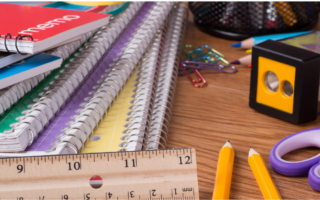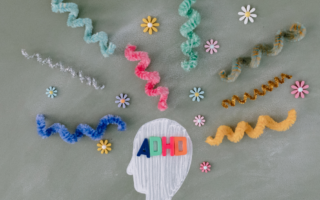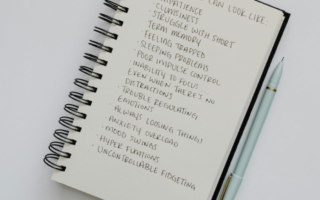As we settle into the new year and the everyday ups and downs of parenting—especially when our kids have ADHD— it can be pretty overwhelming at times. On the one hand, I get excited by the start of a new year and the opportunity to reset and figure out what worked and what didn’t work the prior year. On the other hand, I understand how it feels to want to create change and make progress but be overwhelmed by big ambitions and even bigger challenges. This is why I’ve come to embrace a gentler approach to goal-setting. Today, I want to share some easy, and practical ways to set attainable goals for both you and your kids, celebrate those small wins, and remain flexible when things don’t go as planned.
The Beauty of Gentle Goal-Setting
Setting goals is a wonderful way to focus our energies and create positive changes in our lives. But for us and for our uniquely wired kids—traditional “big, bold” goals can sometimes feel like an impossible mountain to scale. Instead of setting ourselves up for disappointment with lofty resolutions, why not try a gentler approach?
Gentle goal-setting is all about progress over perfection. It’s a method that encourages us to break our goals into bite-sized pieces that feel achievable on a day-to-day basis. Whether it’s establishing a new bedtime routine, planning healthy meals, or even just carving out a few moments for self-care, every small step is a victory worth celebrating.
Setting Attainable Goals Without Overwhelm
1. Start Small and Specific
Rather than focusing on a huge, nebulous outcome, start with a goal that’s clear and manageable. For instance, instead of declaring, “I’m going to be more organized,” try, “I’m going to set up a 10-minute morning checklist for my child and me.”
- Be Specific: Define exactly what you want to achieve. Instead of “eat healthier,” maybe decide on “prepare a healthy breakfast every weekday.”
- Break It Down: Divide bigger goals into smaller, actionable steps. If your goal is to establish a calming bedtime routine, list out the steps—such as a warm bath, a bedtime story, and a few minutes of quiet time.
2. Write It Down
There’s something magical about putting your thoughts on paper. A written goal can be a powerful reminder of what you’re working toward.
- Journaling: Keep a simple journal where you jot down your goals and check in on your progress. Sometimes, just writing down a goal makes it feel more real and attainable.
- Visual Aids: Consider using sticky notes or a small whiteboard. Visual cues are especially helpful for kids, and they can turn goal-setting into a fun, interactive activity.
3. Make It Measurable
Having a clear way to measure your progress is key. It not only gives you a sense of accomplishment but also shows you how far you’ve come, even if the progress is gradual.
- Use a Tracker: Whether it’s a sticker chart for your child or a progress bar for yourself, tracking small achievements can be incredibly motivating.
- Celebrate Incremental Wins: Every time you or your child tick off a small task—like sticking to the morning checklist or successfully winding down at bedtime—take a moment to celebrate. These wins build momentum.
Celebrating Small Wins
One of the most important parts of gentle goal-setting is learning to celebrate every victory, no matter how small. Celebrating small wins isn’t just about feeling good—it reinforces positive behavior and motivates you to keep going.
1. Recognize and Praise
- Specific Praise: When your child (or you) achieves a goal, be sure to acknowledge it. Instead of just saying “Good job,” try something like, “I’m so proud of how you stuck to our new morning routine today!”
- Share Your Success: Take time to share your progress with a friend, partner, or even in a supportive online community. Sometimes, just knowing someone else is cheering you on makes all the difference.
2. Create Mini-Rewards
- Reward Systems: Consider establishing a simple reward system. For example, after a week of consistently following your morning checklist, treat your child to an extra 15 minutes of their favorite activity. And don’t forget a little reward for yourself too!
- Non-Material Rewards: Celebrations don’t have to be big or expensive. Sometimes, a heartfelt high-five, a few extra minutes of playtime, or a cozy cuddle session can be the perfect reward.
Embracing Flexibility: It’s Ok to Adjust
Life, especially with ADHD in the mix, is unpredictable. There will be days when your carefully laid-out plan doesn’t work out—and that’s perfectly okay.
1. Expect the Unexpected
- Plan for Setbacks: Understand that some days will be off, and that’s a natural part of life. When things don’t go as planned, try to see it as an opportunity to learn rather than a failure.
- Reflect and Adjust: If you find that a particular goal or routine isn’t working, take some time to reflect on why. Then, make small adjustments. Maybe the bedtime routine needs a bit more quiet time, or the morning checklist might benefit from fewer steps.
2. Practice Self-Compassion
- Be Kind to Yourself: Remember, you’re doing your best. Parenting is a challenging job, and it’s important to treat yourself with the same kindness and patience you extend to your child.
- Celebrate the Effort: Sometimes, the effort is more important than the outcome. Acknowledge your hard work, even if the goal wasn’t fully met today.
3. Involve Your Child in Adjustments
- Collaborative Approach: Talk with your child about what’s working and what isn’t. Maybe the new routine needs a tweak, or perhaps there’s a better way to organize the morning tasks.
- Empower Them: Allow your child to have a say in the process. This not only makes the routine more tailored to their needs but also gives them a sense of ownership and responsibility.
Final Thoughts
As you embark on this new year, I encourage you to set small, attainable goals and to approach each day with a spirit of kindness and patience for yourself and your kids. Remember, the journey is just as important as the destination. Every step, every tweak in your routine, and every moment of self-compassion is a testament to your strength as a parent.










